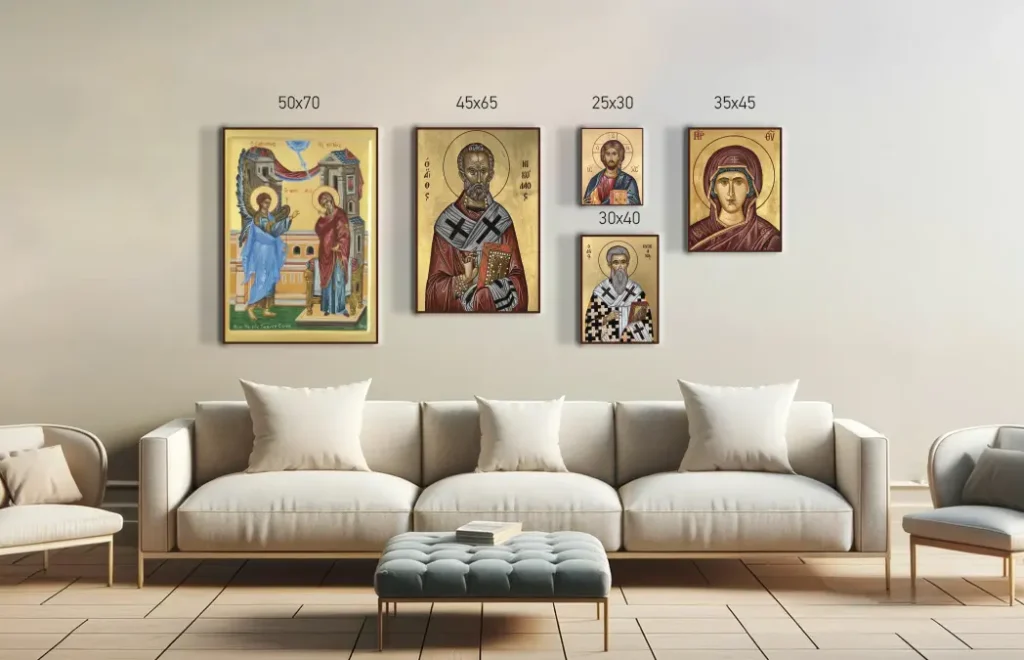The icon of the “Ultimate Humiliation” (Man of Sorrows) is a symbol of the Passion, which leads to the ultimate humiliation of Christ and his ignominious death on the Cross, which he endured for the sake of man’s sins. Christ as Saviour fights his battle on the Cross to redeem man from his spiritual death due to his alienation from God.
This image shows Jesus Christ dead, naked, in a sarcophagus-tomb that reveals his body from the waist up, wearing only the girdle, with his hands folded in the underbelly.
The image has a strong symbolic and functional character. Next to Him is depicted the figure of the Virgin Mary, sorrowful and in pain for the sufferings of Her Son, who embraces Him, covering His body with her shoulder-cloth. The icon has a strong symbolic and liturgical-eucharistic character. The frontality of the body is intended to predispose the viewer to participation, to a personal relationship with Jesus Christ and invites him to an inner dialogue with the truth of His person.
The theme of “Ultimate Humiliation” (Man of Sorrows) was formed at the end of the 11th century in Byzantium. This iconographic type is a simple version of the theme, which is based on the Byzantine iconography of Christ in the iconographic type of “Ultimate Humiliation” (Man of Sorrows), usually accompanied by the figure of the Virgin Mary on one side and the Evangelist John on the other. This iconographic composition became known as the Pieta and became widespread from the 14th to the 16th century.
The new iconographic theme was influenced by hymns with the lamentation of the Virgin Mary, which became established in the rituals of private monasteries in Constantinople. The oldest known example of the type is found in Kastoria and dates back to the 12th century.
Ultimate Humiliation (Man of Sorrows)
Material: Linden wood carved
Background: 22K gold leaf
Dimensions: 35 X 45 cm

